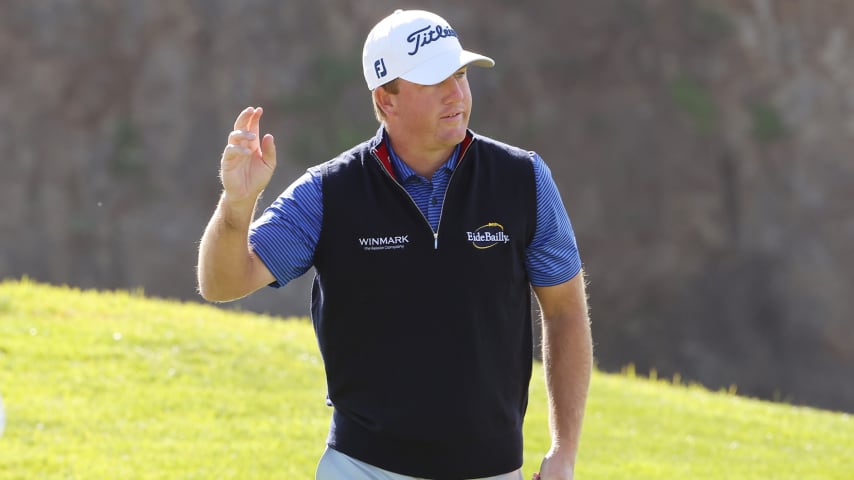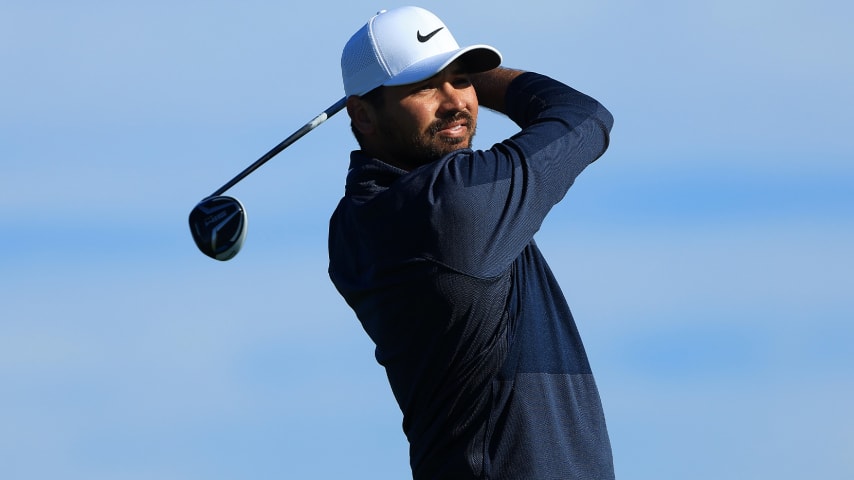How Tiger Woods was the driving force behind Pebble Beach’s redesigned par-3 course
6 Min Read

Written by Jim McCabe
PEBBLE BEACH, Calif. – As scouting missions go, it is difficult to quantify how instrumental Tiger Woods’ practice round was when he visited Pebble Beach in late May of 2019, a month before the U.S. Open.
Yes, he would play steadily that June, shooting 70-72-71-69. But it only left him in a share of 21st, nothing close to the 15-shot win he authored in the 2000 U.S. Open or the T-4 he notched 10 years later when the tournament returned to Pebble Beach.
Still, that practice round in the spring of 2019 might go down as one of the most heralded days in Pebble Beach folklore. That’s because Woods, while walking down the 18th fairway, turned to his caddie that day, John Sawin, and asked, “What are you going to do with The Hay?”
Sawin, the Vice President and Director of Golf for the Pebble Beach Company, was ecstatic. He had filled in at the last minute when Woods’ regular caddie, Joe LaCava, couldn’t make it and never expected hearing what was music to his ears.
“Tiger Woods saw the potential in that property,” said Sawin. “That really piqued our attention.”
Sawin said for months that Pebble Beach Company officials had been trying to determine the fate of The Hay, the eight-acre piece of property that had been a par-3 golf course since it opened in October of 1957.
The course is named after Peter Hay, the legendary Scotsman who served as head professional at Pebble Beach from 1943 until his death in 1961. Hay was beloved not only for a no-nonsense disposition that he employed on many an occasion to keep play moving in the annual Pebble Beach Pro-Am (“Where in the rule book does it say you have to tee up the ball?” he once scowled when Cary Middlecoff said it was too windy to keep his ball on the tee), but for his passion toward junior golfers and those just beginning the game.
To help both juniors and beginners, Hay designed a nine-hole course that measured a total of 761 yards. The shortest hole was 65 yards, the longest 107.
But over the years, Sawin said The Hay served another purpose – it was a valuable “staging area” during the AT&T Pebble Beach Pro-Am in February, those years when Pebble Beach hosted a USGA event, and in August when the world-famous auto show, the Pebble Beach Concours d’Elegance, was held.
It was the area used for getting people from parking areas to the golf course. On these occasions, The Hay was never seen as a short course by tens of thousands of visitors.
“It was a golf course masquerading as a staging area,” Sawin said.
Now board members are acutely aware of the rich golf history at the Pebble Beach Golf Links. They understood that The Hay was built a year before the Par 3 Course at Augusta National, so it didn’t seem right that it had gone neglected.
“Bill Perrochi (the recently retired CEO of the Pebble Beach Company) came up with a lot of recommendations,” said Sawin. “He knew it had history and we had a chance to do something consistent with our other properties.”
What’s more, Pebble Beach board members are passionate golfers who study the landscape and know that there’s been a movement in recent years for resorts to satisfy customers’ eclectic appetites. They desire other golf options.
“We’ve been to Bandon Dunes (where the par-3 Preserve is massively popular) and to Pinehurst (which recently added the The Cradle short course),” said Sawin.
“We think it’s one of the best decisions Pinehurst has ever made. We give credit to them. We were watching.”
Woods’ words to Sawin came at a time when the Board sentiment was to “double-down” and fix up The Hay. In other words, it was perfect timing and the sentiment was emphatic – it was the right thing to do.
That Woods’ interest morphed into something even more – he was hired as architect – was beyond their wildest dreams.
“After the Concours (in last August), we had plans but at the last minute we changed those plans,” said Sawin. “We were making a bigger investment.”
Small property, huge passion. That describes how Woods tackled the assignment. His plan moved 30,000 cubic yards of dirt and what shined through was how Woods clearly is a golfer with deep roots.
The greatest player of his generation has authored his legacy over the longest, and grandest golf courses in the world.
But it all began on some of the shortest and most non-descript courses one could ever find. Heartwell Golf Park in Long Beach, California, a 2,143-yard, par-54 facility, was one of Woods’ early homes.
It was there where he made his first birdie, at the 91-yard third hole. He was 4. Among the items he donated to the World Golf Hall of Fame for his induction later this year is a plaque celebrating his first hole-in-one, which he made on Heartwell’s 12th hole when he was 6 years old.
Woods’ first of six wins in the Junior World Championship came at San Diego’s Presidio Hills Golf Course, which measures about 606 yards for nine holes. He was 8 years old and shot 5 under.
Short courses have a big place in his heart. Woods kept his design within the original Hay footprint. When it re-opened in April, The Hay was met with resounding delight.
“We had not only hit a home run, but a grand slam,” said Sawin.
With a tee sheet that is filled solid for weeks and with an ace being recorded on average “every two days,” said Sawin, Pebble Beach officials have no intention of keeping The Hay as anything but a golf course.
No longer will it be a staging area – not for the AT&T, not for the 2023 U.S. Women’s Open, not for the Concours d’Elegance.
For Woods, the project was satisfying. In a way, it returned him to his roots, and if you’ve listened to him over the years, consistently Woods has talked about the need to grow the game through short courses.
Sawin embraced his front-row seat to the process. Designing a short course with holes from 47 to 106 yards, he said, is intriguing.
“Anyone can design an easy short course. And anyone can design a difficult short course,” he said. “But what Tiger brought to the table was an amazing skill he has to design this course so that both local kids and grandparents can use it.”
So, cheers to Woods, and if you get a chance to tee it up at The Hay, please smile warmly for the memory of a man who is owed a great deal of credit. Peter Hay firmly believed that short courses were crucial to the future of the game.
And here, nearly 65 years from the debut of The Hay, it is a small gem, very much in keeping with the rest of the Pebble Beach resort.
“What a lasting legacy for him,” said Sawin. “He was a man way ahead of his time.”





